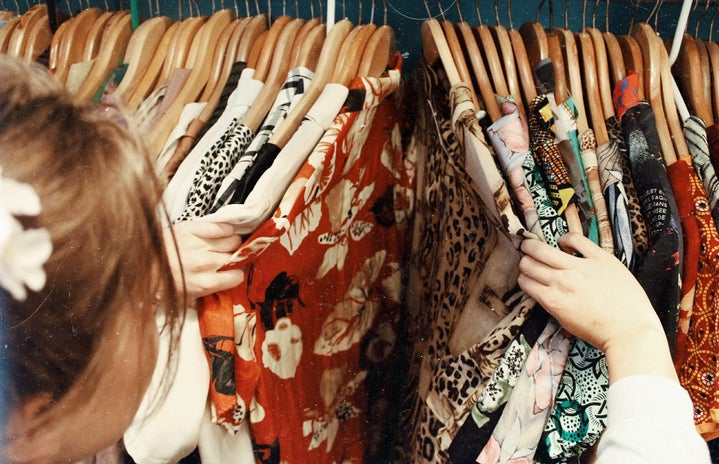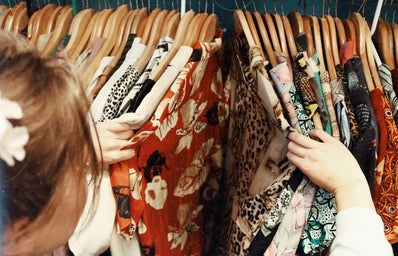Recently, a new TikTok trend has surfaced in which people show their exceedingly large Goodwill hauls, going over every piece, how much it cost them and how much they are planning to upsell it for on an app called Depop.
The responses have been quick and brutal, many commenters criticizing them for selling already-thrifted items for 10 times the original price and questioning why someone needs to buy that many clothes. A lot of Tik Tokers have coined the term “Depop gentrifiers” for the people who participate in this trend.
However, plenty of people don’t understand the process of gentrification and why it’s being thrown around on these social media sites. It’s important to understand the concept in order to draw conclusions about this trend.
But first, what is Depop? Depop is a platform on which an individual can sell clothes and other items of their own accord; I like to compare it to an online garage sale. Other apps like Poshmark do the same thing, but the difference lies in the younger, trendier audience that Depop attracts.
Recently, Depop has experienced an influx in sellers because of this popularity, bringing it to the forefront of online second-hand shopping. This is a reason for its popularity on apps such as TikTok; many famous Tik Tokers have their own Depop accounts, which they use to sell clothes while also fueling their fan base.
The word gentrification is used to describe the process of changing the original purpose or character of something. The term is typically applied to cities and other communities, and it often requires getting rid of things that originally benefitted the average person and replacing them with more expensive options meant for wealthier people. Tik Tokers are arguing that this trend has displaced the original users of Depop — buyers who want something long-lasting for a cheaper price — and replaced them with only the people who can afford the expensive and high-priced items.
Now, this isn’t inherently a problem — user demographics of any given app are constantly changing. The idea is the same for Facebook users versus Instagram users. If you can’t afford Depop, there are other apps that do the same thing as the older version of Depop, right? That may be true, but the main reason why this kind of gentrification is deemed an issue is because of the specific items being sold on Depop.
Let’s first make a distinction between people who use Depop to sell a few items they found while thrifting, old clothes and handmade or vintage items, and people who buy in-bulk from thrift stores without upscaling or improving them. The first category is not contributing to the problem being addressed online. They are often just trying to make a living, and especially with the pandemic, this is a good solution for many. It also requires a lot of effort to sell clothes on this app. People tend to forget that sellers have to buy their own packaging and tape and do all the shipping and handling work themselves without employees behind them. That time and energy they’re spending on each article of clothing can and should be reflected in the prices of their items.
However, the second group of people — those who bulk buy from thrift stores, add nothing to the clothing they sell and then inflate the worth of the item by making the price five times the original — are the causes of the gentrification that people are criticizing. Not only does this process take away from the original purpose of the app, but it takes away from what is available at thrift stores.
Granted, it is difficult to run out of clothing at Goodwill. There is always going to be an influx and overabundance of clothing on the planet, especially in America where millions of tons of clothes end up in landfills.
But people are arguing that thrift stores are meant for people with low-income status to be able to buy long-lasting clothes for cheap prices. Therefore, it is problematic when people go into thrift stores, take all of the nice and durable clothing items and then sell them on Depop where low-income shoppers can no longer afford them. In addition, it’s important to recognize how hard it is to find really good items while thrift shopping. Many of the shirts and sweaters aren’t in the best condition, and it always takes a long time to snag a good find. When most of these pieces are gone, low-income people have to pick through the leftovers.
That being said, thrift shopping is great for the environment, and I recommend it to everyone; Depop is still a great tool to utilize when buying and selling clothing. There is a lot of nuance within the topic of second-hand buying that should be addressed, but for right now it’s important to understand what “Depop gentrification” is, how it affects others and that buying less is not only sustainable but also considerate.


